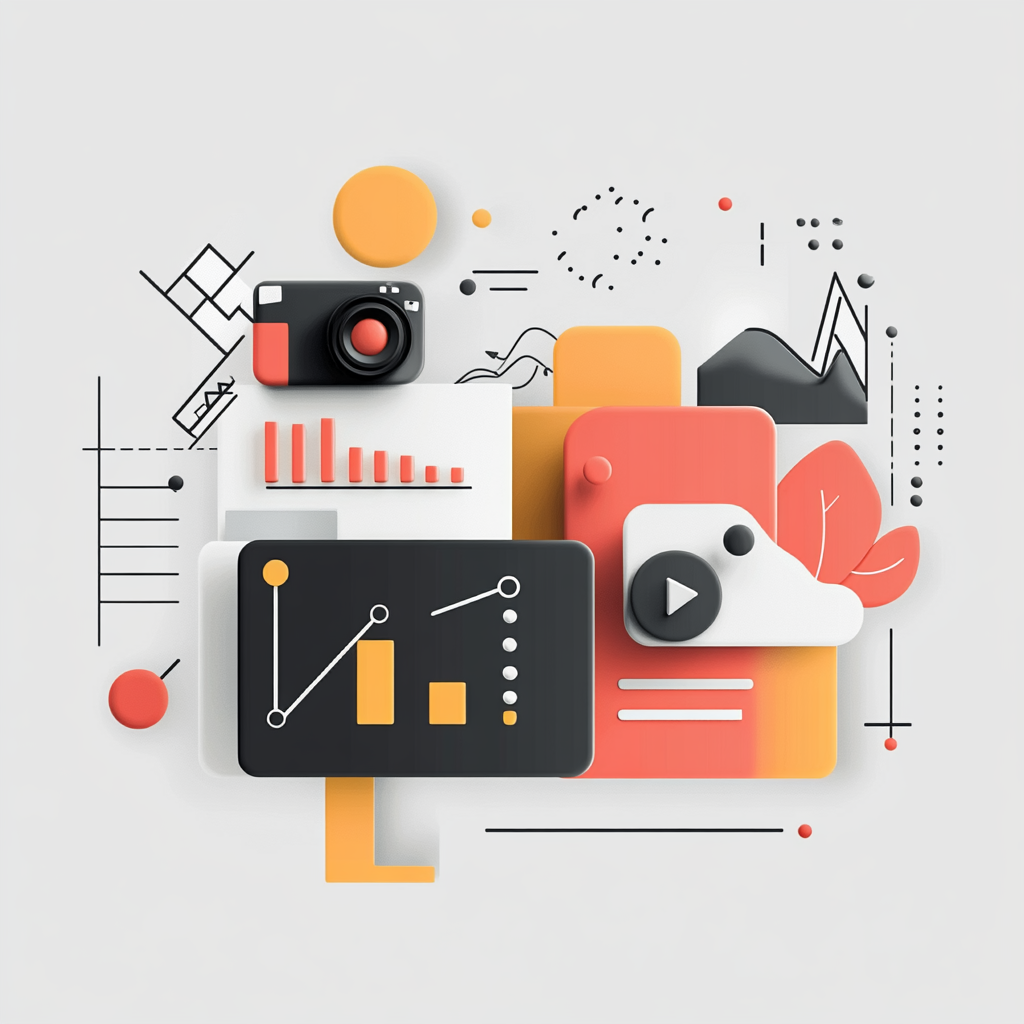The Top 100 Ways AI is Transforming Everyday Life
Here’s an improved and expanded version of the list, including content improvements, benefits, and real-world examples to make it

Here’s an improved and expanded version of the list, including content improvements, benefits, and real-world examples to make it more engaging and informative. This version is designed to help you create a compelling blog post or article that not only lists how AI is changing everyday life but also explains the impact and advantages of these changes.
AI in Communication
- Smart Replies: AI-powered email and messaging apps suggest quick responses.
- Benefit: Saves time and improves productivity.
- Example: Gmail’s Smart Compose feature.
- Voice Assistants: Siri, Alexa, and Google Assistant help with daily tasks.
- Benefit: Hands-free convenience for managing schedules, playing music, and controlling smart home devices.
- Example: “Hey Siri, set a timer for 10 minutes.”
- Real-Time Translation: Apps like Google Translate break language barriers.
- Benefit: Enables seamless communication across languages.
- Example: Travelers using translation apps to navigate foreign countries.
- Spam Filters: AI keeps your inbox clean by filtering unwanted emails.
- Benefit: Reduces clutter and protects against phishing scams.
- Example: Gmail’s spam detection accuracy is over 99%.
- Speech-to-Text: AI transcribes your voice notes into text effortlessly.
- Benefit: Improves accessibility and note-taking efficiency.
- Example: Otter.ai for meeting transcriptions.
- Personalized News Feeds: AI curates news based on your interests.
- Benefit: Delivers relevant content and reduces information overload.
- Example: Google News and Apple News algorithms.
- Social Media Algorithms: AI decides what content you see on platforms like Instagram and Facebook.
- Benefit: Keeps users engaged with tailored content.
- Example: Instagram’s Explore page.
- Chatbots: AI-powered customer service agents handle queries 24/7.
- Benefit: Provides instant support and reduces wait times.
- Example: H&M’s chatbot for fashion advice.
- Voice Modulation: AI enhances voice clarity in calls and recordings.
- Benefit: Improves communication quality in noisy environments.
- Example: Krisp.ai for noise cancellation.
- Fake News Detection: AI identifies and flags misleading information online.
- Benefit: Promotes accurate information and combats misinformation.
- Example: Facebook’s AI tools for detecting false news.
AI in Transportation
- Self-Driving Cars: AI powers autonomous vehicles from Tesla and Waymo.
- Benefit: Reduces accidents caused by human error and improves mobility for the elderly and disabled.
- Example: Tesla’s Autopilot feature.
- Ride-Sharing Apps: AI optimizes routes for Uber and Lyft drivers.
- Benefit: Saves time and fuel while reducing traffic congestion.
- Example: Uber’s route optimization algorithms.
- Traffic Management: AI reduces congestion in smart cities.
- Benefit: Improves commute times and reduces emissions.
- Example: AI-powered traffic lights in Los Angeles.
- Predictive Maintenance: AI alerts drivers about potential car issues.
- Benefit: Prevents breakdowns and extends vehicle lifespan.
- Example: GM’s OnStar service.
- Drone Deliveries: AI enables drones to deliver packages efficiently.
- Benefit: Faster deliveries, especially in remote areas.
- Example: Amazon Prime Air.
AI in Healthcare
- Medical Diagnosis: AI helps doctors detect diseases like cancer early.
- Benefit: Improves accuracy and speeds up diagnosis.
- Example: IBM Watson for Oncology.
- Wearable Devices: AI monitors heart rate, sleep, and activity levels.
- Benefit: Encourages healthier lifestyles and early detection of health issues.
- Example: Fitbit and Apple Watch.
- Telemedicine: AI powers virtual consultations with doctors.
- Benefit: Increases access to healthcare, especially in rural areas.
- Example: Teladoc Health.
- Drug Discovery: AI accelerates the development of new medications.
- Benefit: Reduces costs and time for bringing drugs to market.
- Example: Insilico Medicine’s AI-driven drug discovery.
- Personalized Treatment Plans: AI tailors therapies to individual patients.
- Benefit: Improves treatment outcomes and reduces side effects.
- Example: AI in precision medicine for cancer treatment.
AI in Entertainment
- Streaming Recommendations: Netflix and Spotify use AI to suggest content.
- Benefit: Enhances user experience by curating personalized playlists and shows.
- Example: Netflix’s “Because you watched” feature.
- AI-Generated Music: Tools like Amper Music create original tracks.
- Benefit: Provides affordable music for content creators.
- Example: AI-composed songs for YouTube videos.
- Video Game AI: AI powers non-player characters (NPCs) and game dynamics.
- Benefit: Creates immersive and challenging gaming experiences.
- Example: AI in games like The Last of Us Part II.
- Deepfake Technology: AI creates realistic but fake videos and images.
- Benefit: Used in entertainment but raises ethical concerns.
- Example: Deepfake videos of celebrities.
- Virtual Influencers: AI-generated personalities like Lil Miquela gain fame.
- Benefit: Offers brands a new way to engage with audiences.
- Example: Lil Miquela’s collaborations with Prada and Calvin Klein.
AI in Education
- Personalized Learning: AI adapts lessons to students’ needs.
- Benefit: Improves learning outcomes by addressing individual strengths and weaknesses.
- Example: Khan Academy’s adaptive learning platform.
- Automated Grading: AI evaluates assignments and exams.
- Benefit: Saves teachers time and provides instant feedback to students.
- Example: Gradescope for grading essays and exams.
- Virtual Tutors: AI helps students with homework and test prep.
- Benefit: Provides 24/7 academic support.
- Example: Socratic by Google.
- Language Learning Apps: Duolingo uses AI to teach new languages.
- Benefit: Makes language learning fun and accessible.
- Example: Duolingo’s AI-powered chatbots.
- Plagiarism Detection: AI checks for copied content in student work.
- Benefit: Promotes academic integrity.
- Example: Turnitin’s plagiarism checker.
AI in Home Life
- Smart Home Devices: AI powers thermostats, lights, and security systems.
- Benefit: Enhances convenience, security, and energy efficiency.
- Example: Nest Thermostat.
- Voice-Activated Appliances: AI lets you control devices with your voice.
- Benefit: Simplifies daily tasks.
- Example: “Alexa, turn off the lights.”
- Energy Efficiency: AI optimizes home energy usage.
- Benefit: Reduces utility bills and environmental impact.
- Example: Smart meters and AI-powered energy management systems.
- Home Security: AI detects intruders and sends alerts.
- Benefit: Provides peace of mind and protects property.
- Example: Ring doorbell cameras.
- Robotic Vacuum Cleaners: AI helps Roomba navigate your home.
- Benefit: Saves time on household chores.
- Example: iRobot Roomba.
Conclusion: The Benefits of AI in Everyday Life
AI is no longer a futuristic concept—it’s here, and it’s transforming how we live, work, and play. From saving time and improving efficiency to enhancing safety and personalizing experiences, AI is making life easier, smarter, and more connected. While challenges like ethical concerns and job displacement remain, the benefits of AI are undeniable. As technology continues to evolve, the possibilities for improving everyday life are endless.
This expanded version provides real-world examples, benefits, and a conclusion to tie everything together. Let me know if you’d like to dive deeper into any specific section! 🚀




